Egyptian cuisine is influenced a lot by Mediterranean and Middle Eastern cuisines, which fill the food with diverse flavors and aromas.
The majority of Egyptian recipes are a combination of figs, rice, and bread, and it wouldn’t be wrong to call them the signature ingredients.
Ranging from hummus to shawarma, Egyptian recipes have the influence of Mediterranean and Eastern cuisines.
We have carefully selected these recipes to ensure your flavor preferences are fully covered and have the most authentic flavors that you won’t forget.
You Might Also Be Interested in:
Koshari
Koshari is a beloved Egyptian comfort food that perfectly represents the country’s culinary diversity.
This one pot dish consists of a hearty mix of rice, lentils, macaroni pasta, and chickpeas, all topped with a mouthwatering tomato sauce and fried onions.
The balance of flavors creates a unique and satisfying experience.
Koshari’s origin can be traced back to the time when Egypt was under British occupation, and it reflects the fusion of cultural influences into a delicious dish.
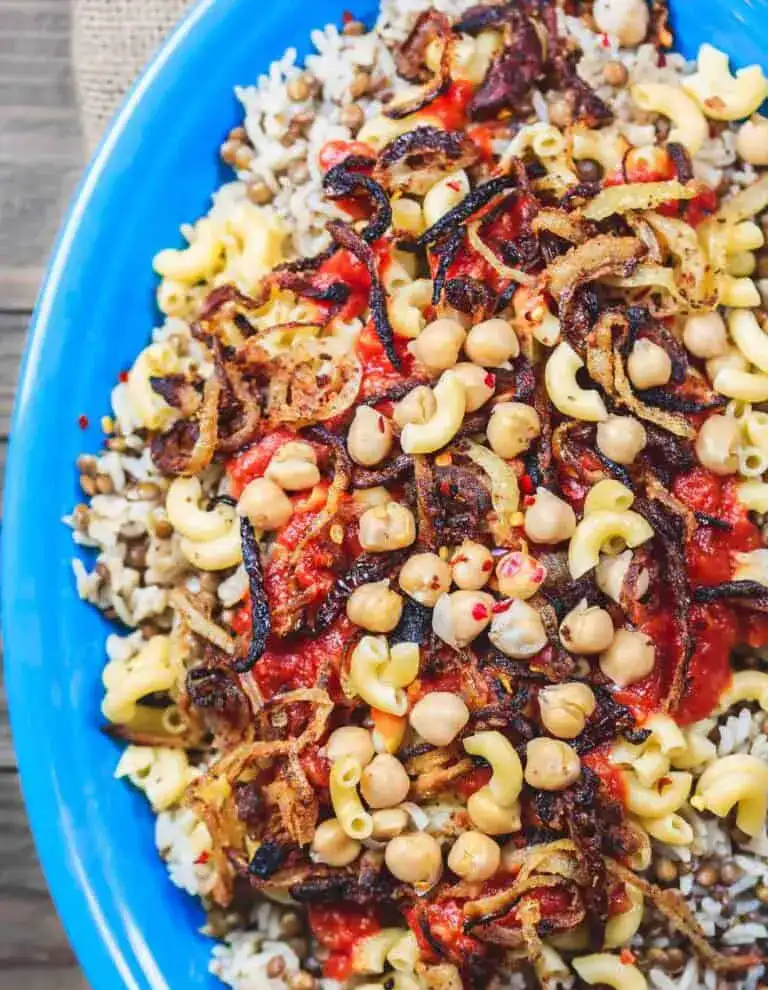
Ful Medames
Ful Medames is a staple of Egyptian breakfast cuisine, a hearty dish made from fava beans that are slowly cooked and seasoned to perfection.
Often served with olive oil, garlic, lemon juice, and various herbs and spices, it is commonly enjoyed with a side of bread or pita.
Rich in protein and fiber, Ful Medames is delicious and also provides sustained energy, making it an ideal choice to start the day.
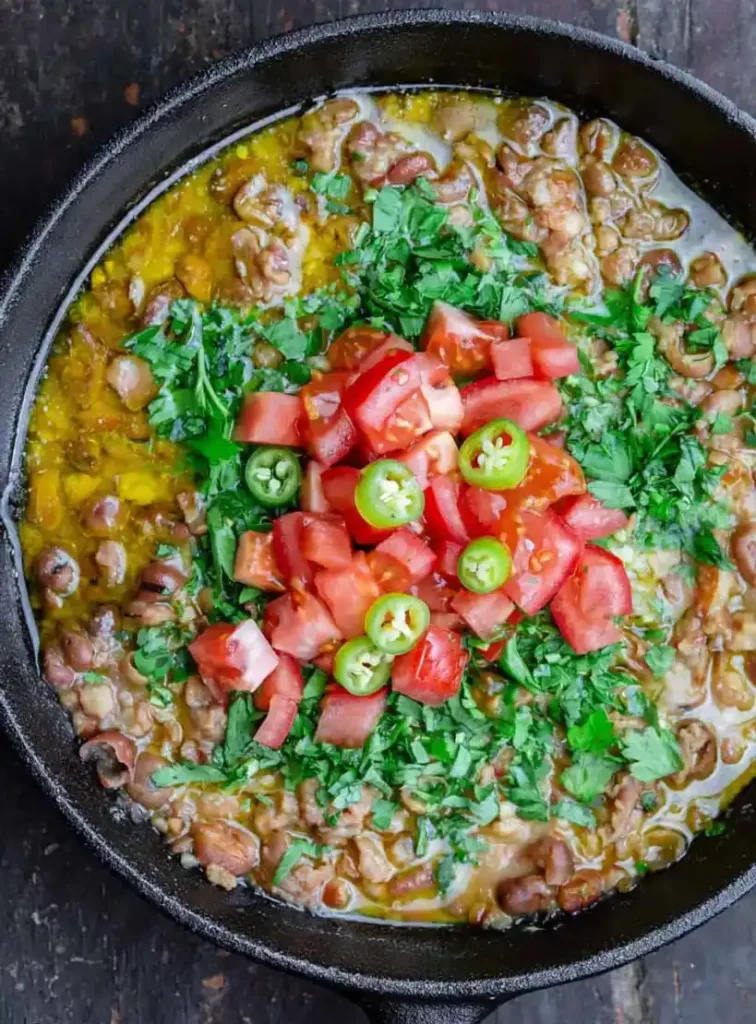
Molokhia
Molokhia, also known as Jew’s mallow, is a leafy green vegetable that’s central to Egyptian cuisine. The dish is usually given over rice or with bread.
The leaves are chopped and cooked to create a unique, slightly viscous soup that’s often flavored with garlic, coriander, and sometimes chicken or rabbit.
Molokhia has a distinct earthy flavor and is cherished for its nutritional value as well as its cultural significance in Egyptian culinary heritage.
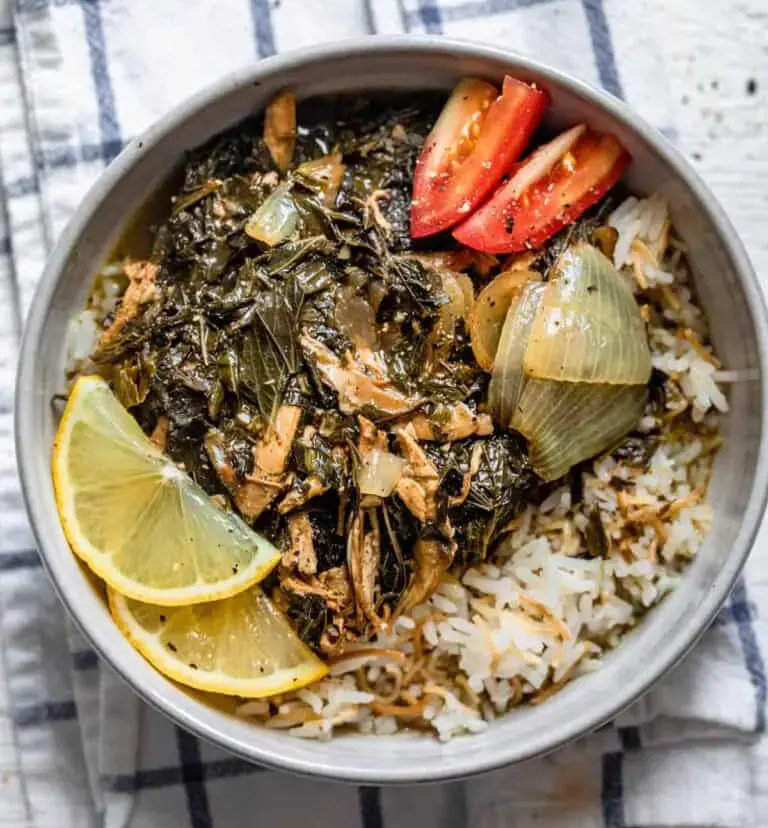
Mahshi
Mahshi refers to a variety of stuffed vegetable dishes, where vegetables like bell peppers, zucchinis, and eggplants are hollowed out.
After this, they are filled with a delicious mixture of rice, minced meat, herbs, and spices.
These stuffed vegetables are then simmered in a tomato-based sauce until tender.
Mahshi is a testament to Egyptian cooking, with each bite offering flavors that showcase the mastery of blending ingredients into a delectable meal.
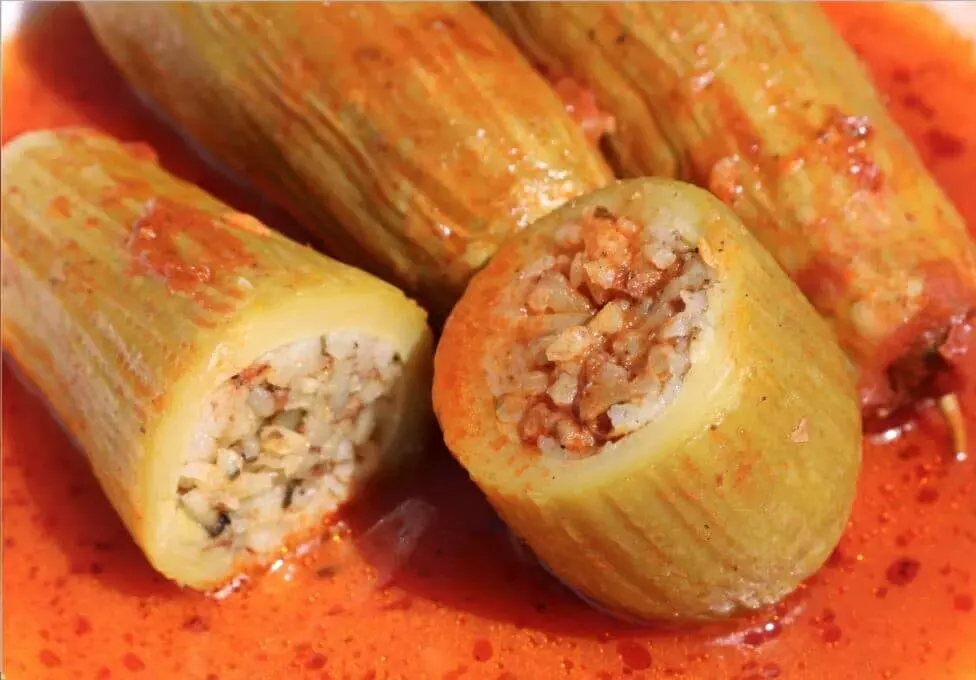
Fattah
Fattah is a dish that holds a special place in Egyptian cuisine and is often associated with celebratory occasions and holidays.
It’s a layered dish with roasted or fried bread, rice, and lamb or beef, all covered with an aromatic garlic and vinegar sauce, and garnished with nuts and herbs.
The complexity of flavors and the harmonious interplay between the ingredients make Fattah a dish of both cultural and culinary significance.
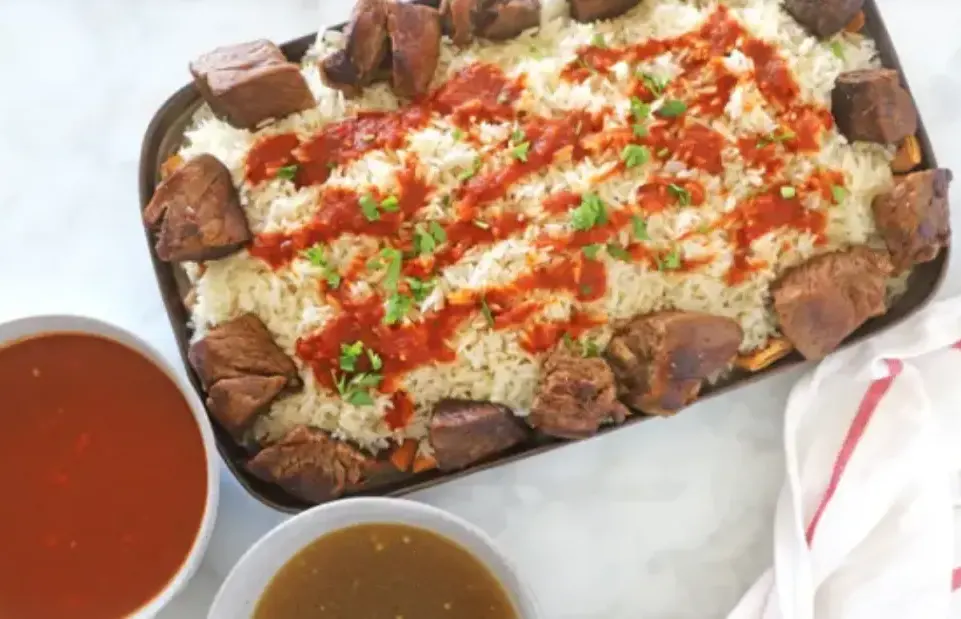
Roz Bel Laban
Roz Bel Laban, which translates to “rice with milk,” is a delightful dessert that showcases the influence of dairy in Egyptian cuisine.
It’s made by cooking rice in milk until it becomes creamy and tender, often flavored with vanilla or a touch of rose water.
The dessert is then sweetened with sugar and sometimes topped with nuts, raisins, or a sprinkle of cinnamon.
It’s comforting and delicate taste makes it a popular choice for celebrations and gatherings.
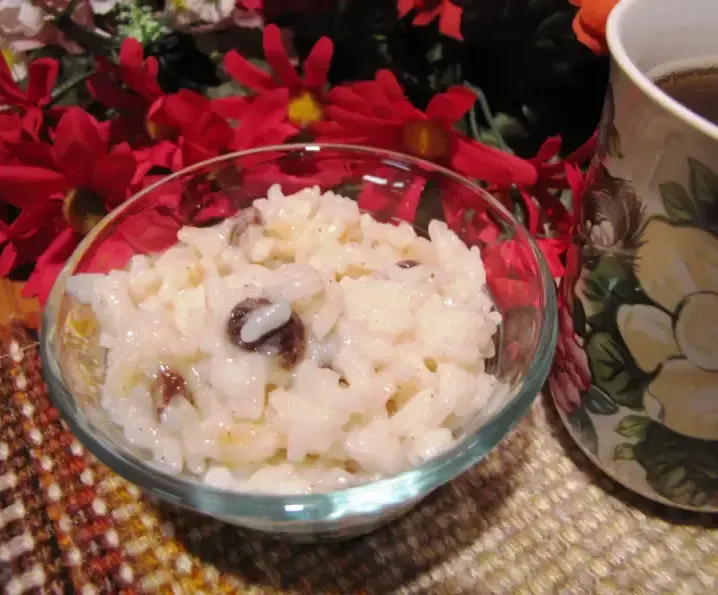
Hawawshi
Hawawshi is a flavorful Egyptian street food that’s essentially a stuffed sandwich.
It features a mixture of minced meat combined with onions, peppers, and spices, which is stuffed into pita bread and baked until crispy and aromatic.
The result is a satisfying combination of crunchy bread and spiced meat that’s both portable and delectable.
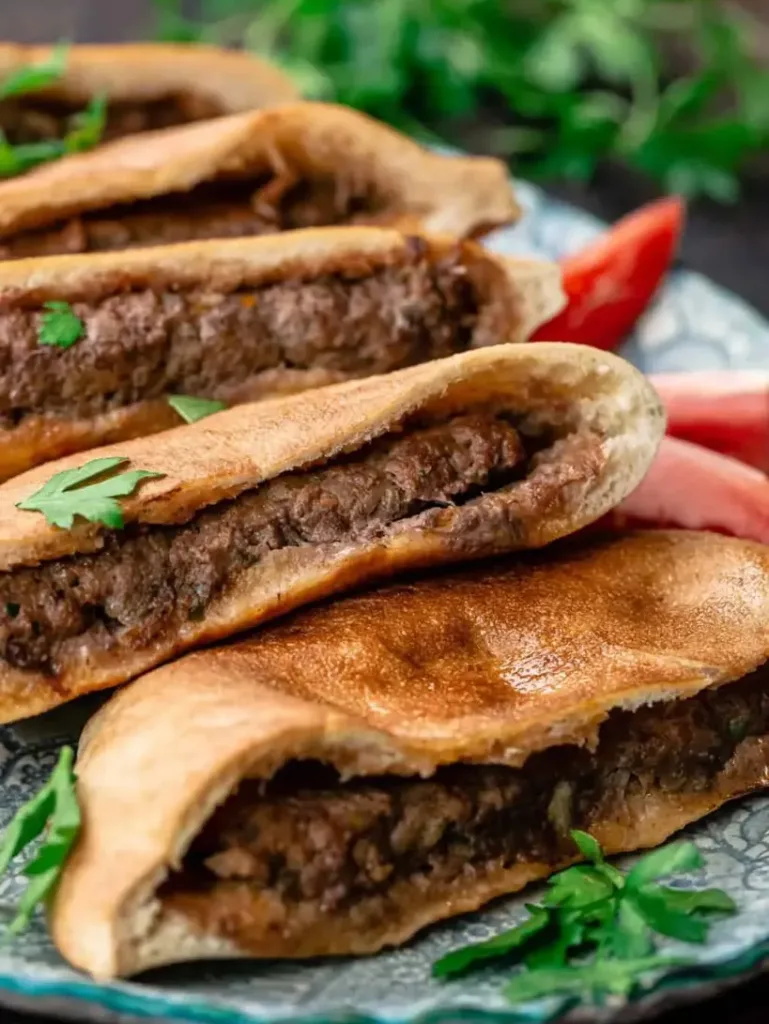
Ta’ameya (Egyptian Falafel)
Ta’ameya is Egypt’s version of falafel, made from fava beans or chickpeas blended with herbs like cilantro and parsley, and spices like cumin and garlic.
These ingredients are formed into small patties and deep fried to create a crispy exterior and a tender interior.
Ta’ameya is often served in pita bread with salad, tahini, and sometimes pickled vegetables.
It’s a popular street food that showcases the Egyptian twist on the classic Middle Eastern dish.
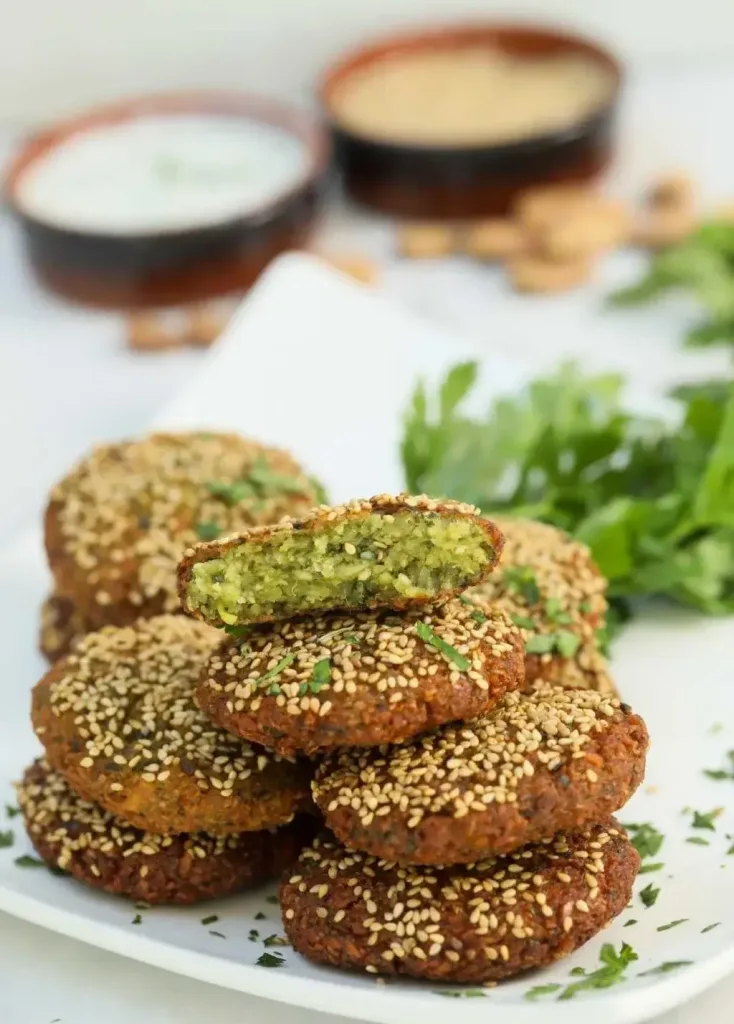
Samak Meshwi
Samak Meshwi is a grilled fish dish that reflects Egypt’s coastal culinary traditions.
A whole fish, such as mullet or sea bream, is marinated with a blend of herbs, spices, and sometimes garlic, then grilled over an open flame or on charcoal.
The result is a smoky and flavorful fish with crispy skin and succulent meat.
Samak Meshwi is often accompanied by a side of rice or Egyptian bread and a squeeze of lemon.
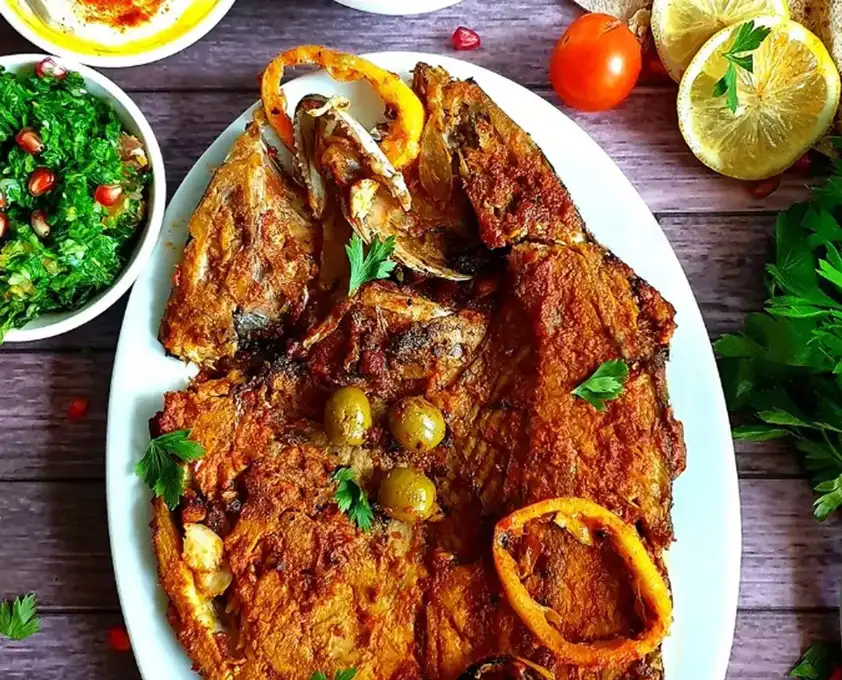
Bamya
Bamya, also known as okra, takes center stage in this delicious Egyptian stew.
The okra pods are cooked in a rich tomato sauce along with chunks of meat (often beef or lamb), creating a hearty and flavorful dish.
The combination of okra’s natural sliminess with the thick tomato sauce results in a satisfying texture and depth of flavor.
Bamya is commonly served with rice or bread and is a beloved dish in Egyptian households.
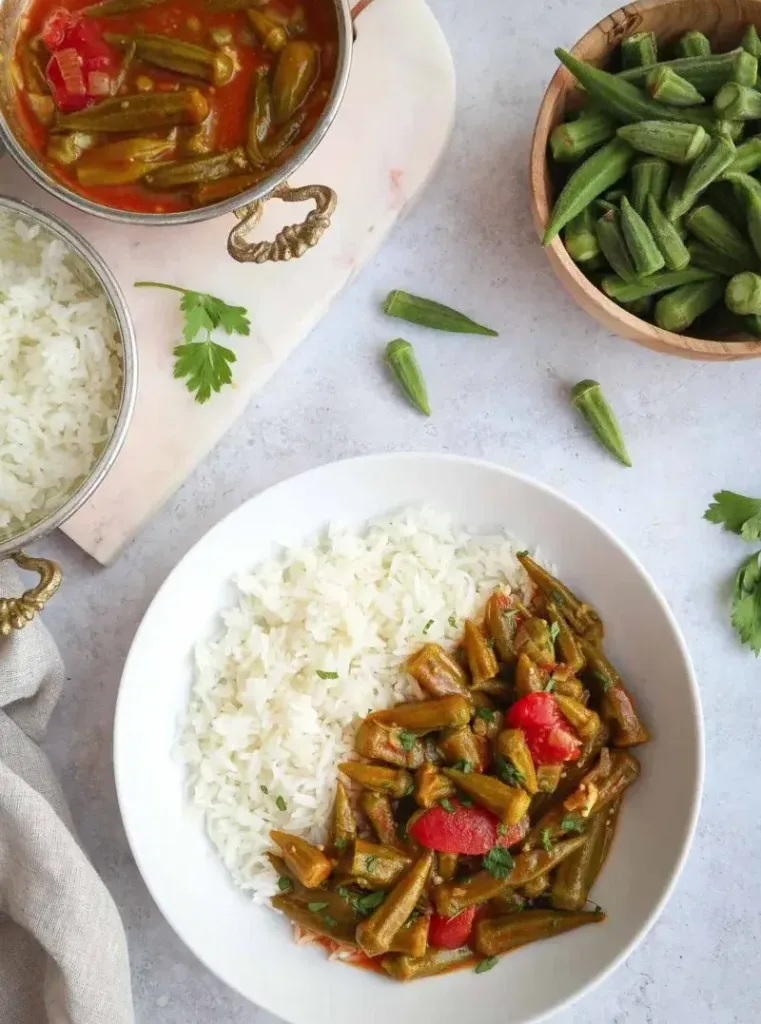
Kebda Iskandarani
Kebda Iskandarani is a dish that highlights the flavors of Alexandria, a coastal city in Egypt.
It consists of sautéed liver (usually from lamb or chicken) seasoned with spices like cumin, coriander, and garlic.
The liver is typically served with Egyptian bread and sometimes accompanied by sautéed vegetables.
This dish offers a rich and robust taste, reflecting the influence of regional ingredients and culinary preferences.
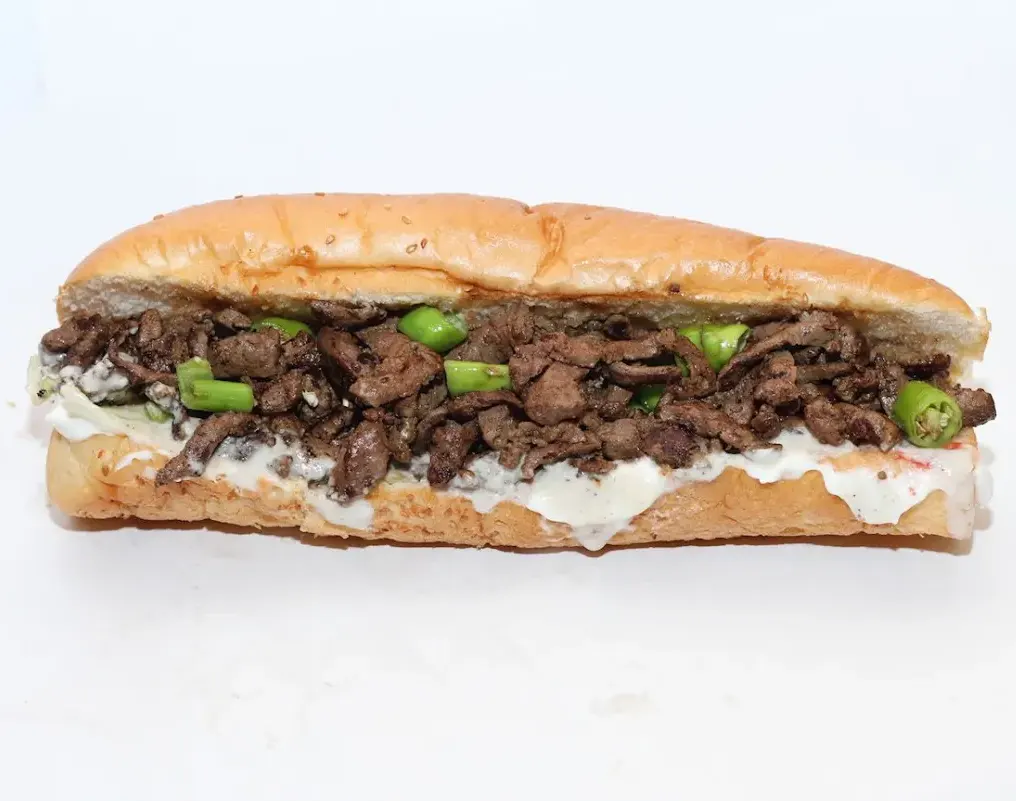
Ruz Bel Hleeb
Ruz Bel Hleeb, also known as rice pudding, is a popular Egyptian dessert made by simmering rice in milk until it becomes creamy and tender.
Sweetened through sugar and flavored with vanilla or rose water, the dessert is often garnished with ground cinnamon, chopped nuts, or raisins.
Ruz Bel Hleeb is a comforting and indulgent treat that’s enjoyed on various occasions.
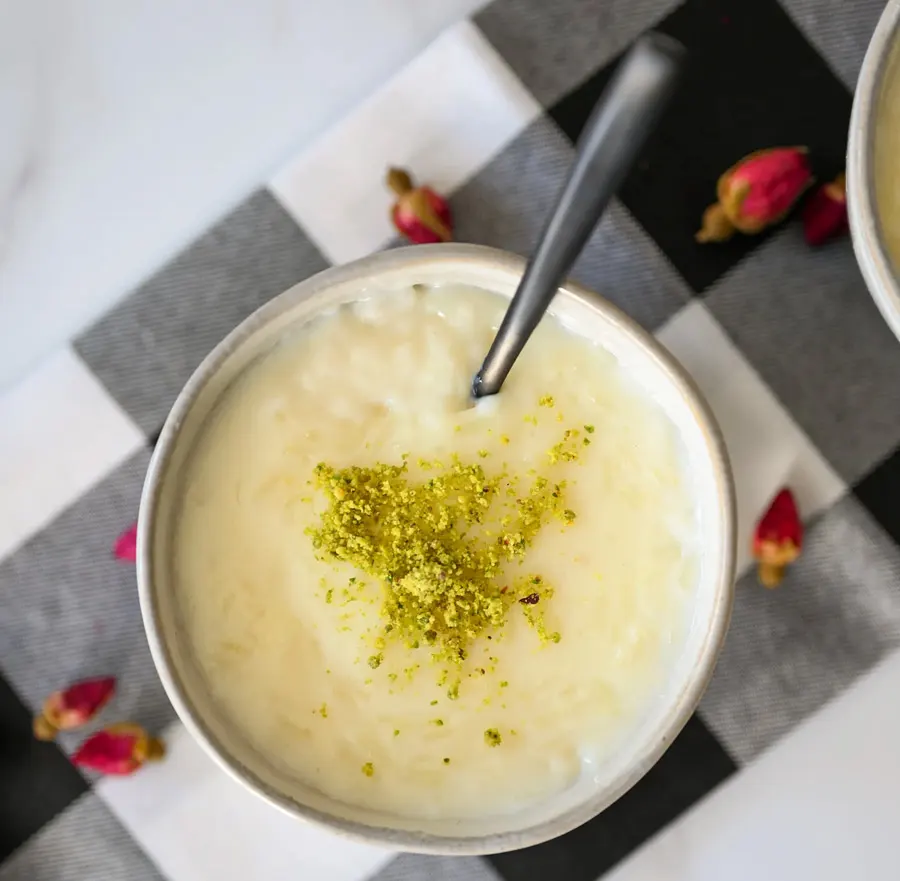
Hamam Mahshi
Hamam Mahshi translates to “stuffed pigeons” and is a dish traditionally associated with celebratory feasts.
Whole pigeons are stuffed with a mixture of spiced rice and sometimes minced meat, then roasted or braised until tender.
The dish is a reflection of Egypt’s history and the use of poultry in traditional cuisine, often enjoyed as a special treat during important events.
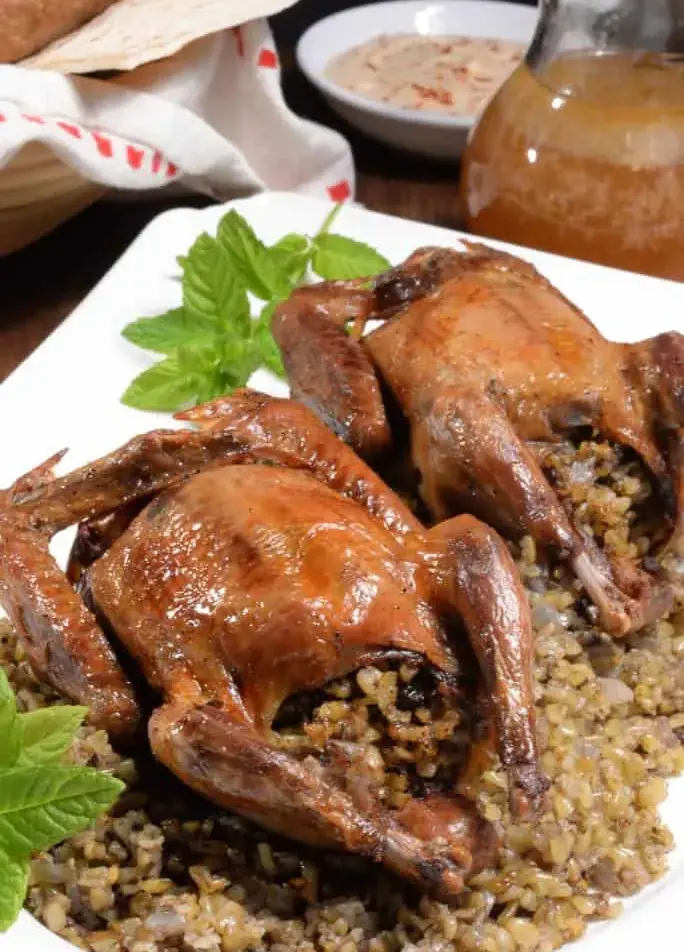
Bessara
Bessara is a hearty Egyptian soup made from dried fava beans that are simmered until they soften and are then puréed.
The soup is traditionally flavored with garlic, cumin, and olive oil, creating a simple yet flavorful dish.
Bessara is often served with bread, and it’s a nutritious and comforting option, particularly during colder months.
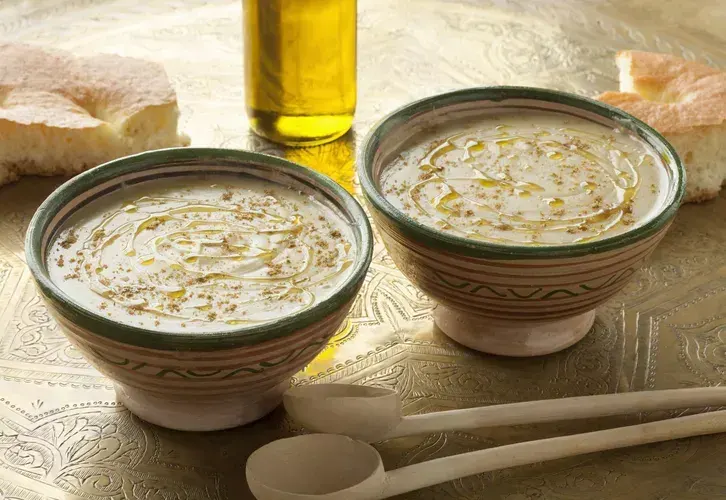
Kebab Wa Kofta
Kebab Wa Kofta is a dish that showcases the art of grilling in Egyptian cuisine.
It includes a variety of skewered and grilled meats, such as kebabs (cubes of marinated meat) and kofta (minced meat patties).
These meats are seasoned with a blend of spices and herbs, resulting in a smoky and flavorful dish that’s often served with bread, rice, or salads.
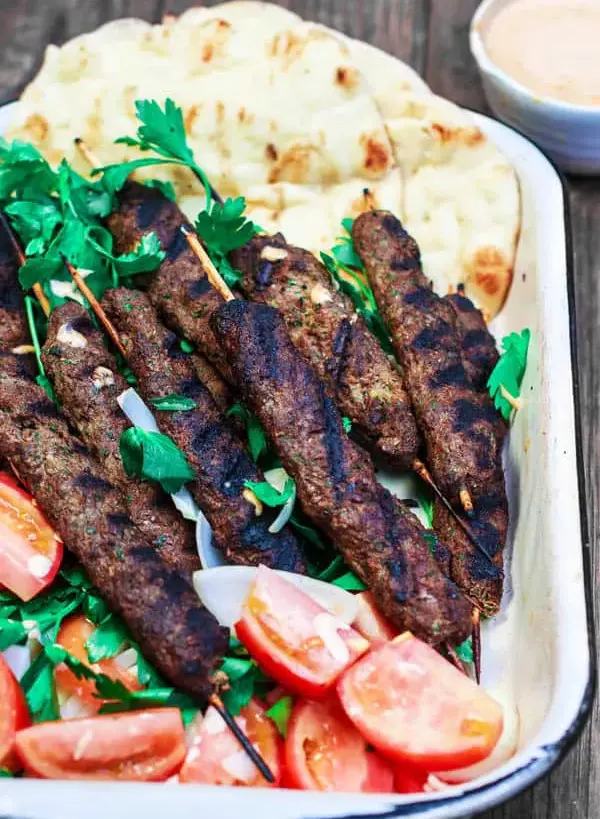
Kounafa
Kounafa, also spelled kunafa or knafeh, is a beloved Egyptian dessert that’s made with thin, shredded pastry dough layered with a sweet filling.
You can use sweetened cheese, semolina, or nuts like pistachios to make the filling.
The dessert is baked until golden and crispy, then soaked in a fragrant sugar syrup.
Kounafa is known for its delightful contrast of textures and flavors, making it a popular treat during festive occasions.
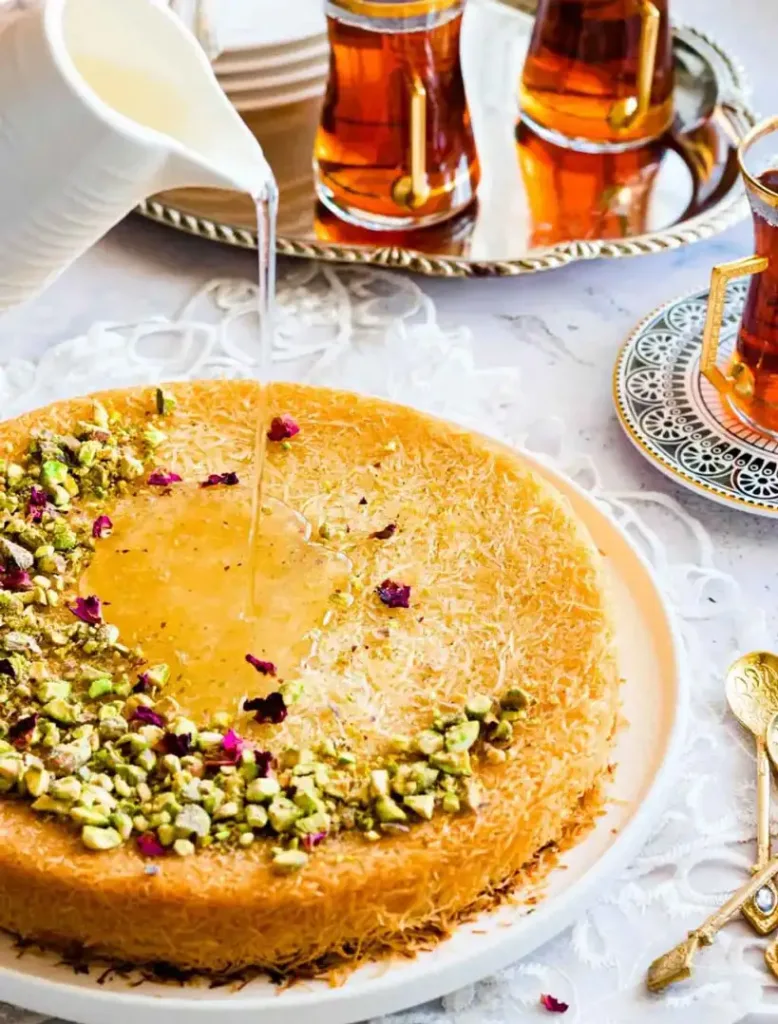
Basbousa
Basbousa is a semolina cake soaked in sweet syrup, prevalent in Egyptian and Middle Eastern cuisines.
Made from semolina, coconut, and yogurt, the cake is baked until golden and dipped in a sugar or honey syrup infused with rose or orange blossom water.
The result is a moist and aromatic dessert with a slightly crunchy top.
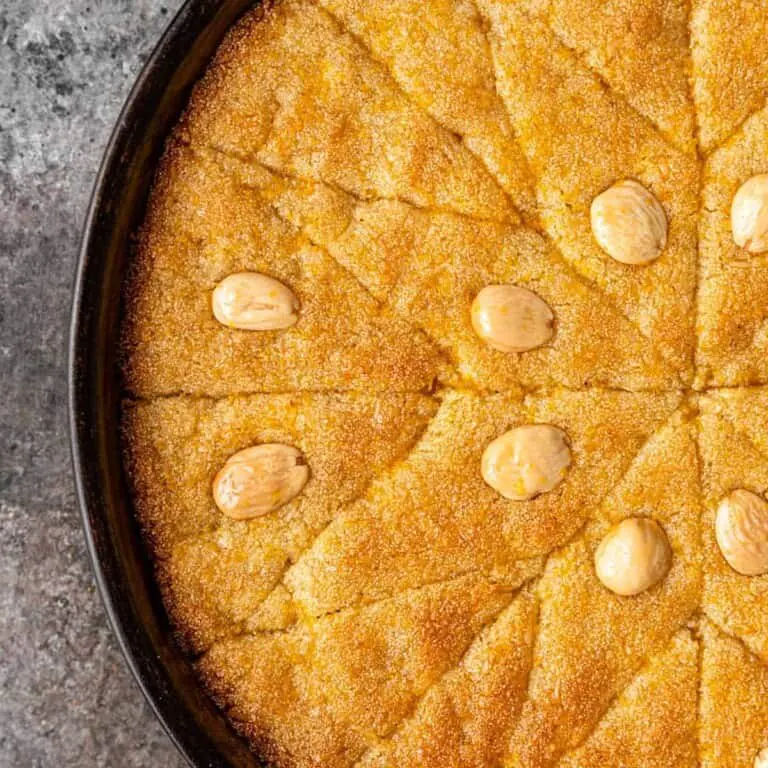
Feteer Meshaltet
Feteer Meshaltet is a flaky Egyptian pastry that resembles thin layers of puff pastry.
It’s traditionally made by layering sheets of dough with clarified butter and then folding and rolling the dough to create distinct layers.
The pastry can be filled with various ingredients, such as sweet fillings like honey and nuts, or savory options like cheese or minced meat.
Feteer Meshaltet is baked until golden and crispy, resulting in a delectable and indulgent dish.
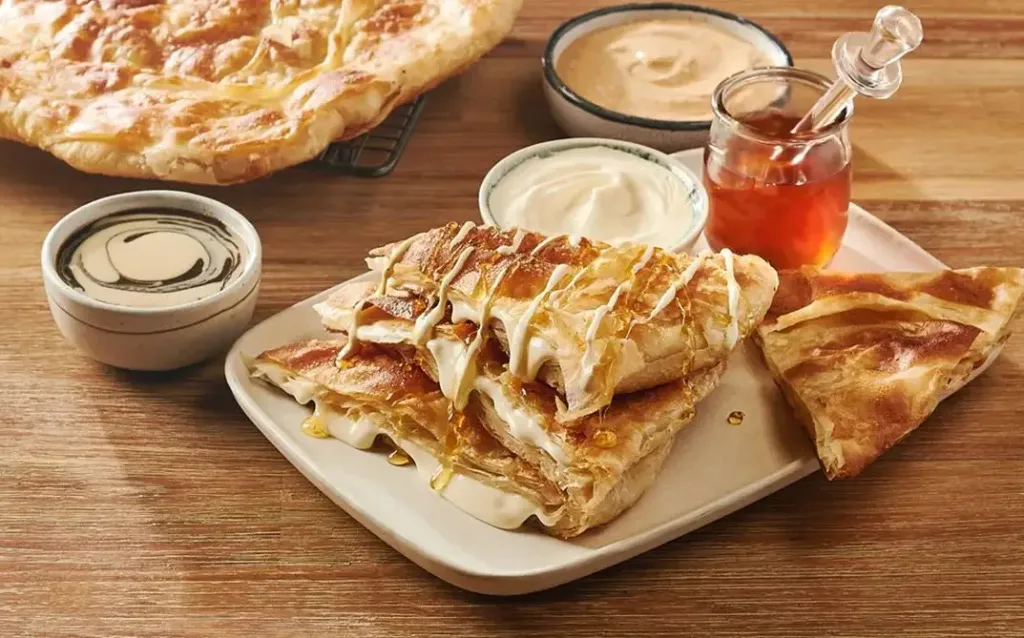
Shakshouka
While Shakshouka is known across the Middle East and North Africa, the Egyptian version offers its own distinct twist.
It typically consists of eggs poached in a spiced tomato and pepper sauce, often flavored with cumin, paprika, and sometimes chili peppers.
The dish is a comforting and hearty breakfast option, often served with Egyptian bread for dipping into the flavorful sauce.
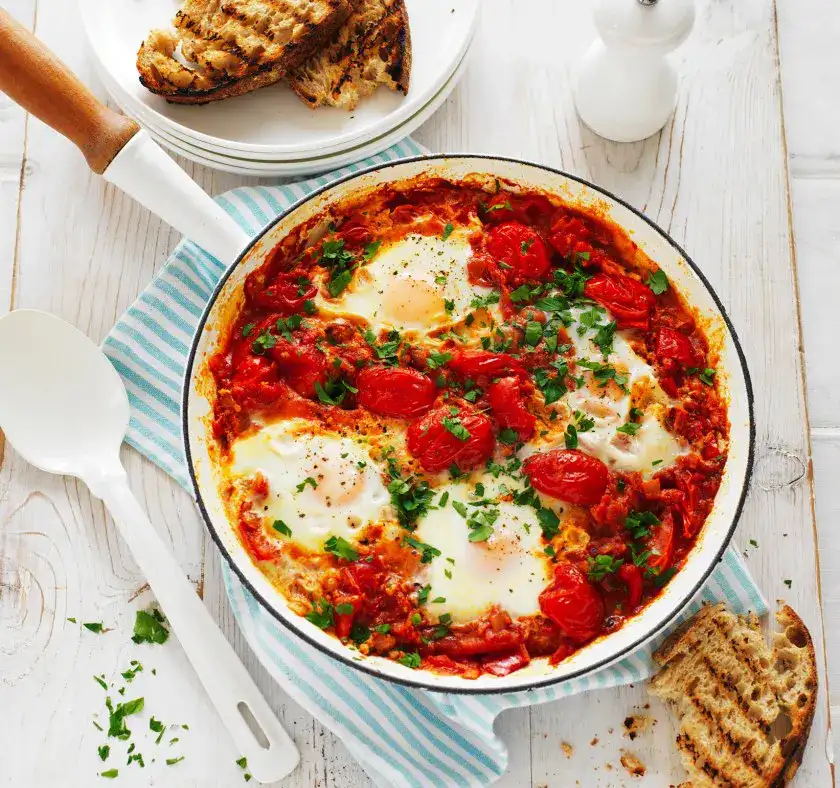
Karkadeh
Karkadeh is a refreshing and vibrant Egyptian beverage made from hibiscus flowers.
They are drowned in hot water to create a deep red infusion, which is sweetened with sugar and flavored with rose water or orange blossom water.
Karkadeh is enjoyed both hot and cold and is known for its tangy and slightly tart flavor profile. It’s a popular drink, especially during hot Egyptian summers.
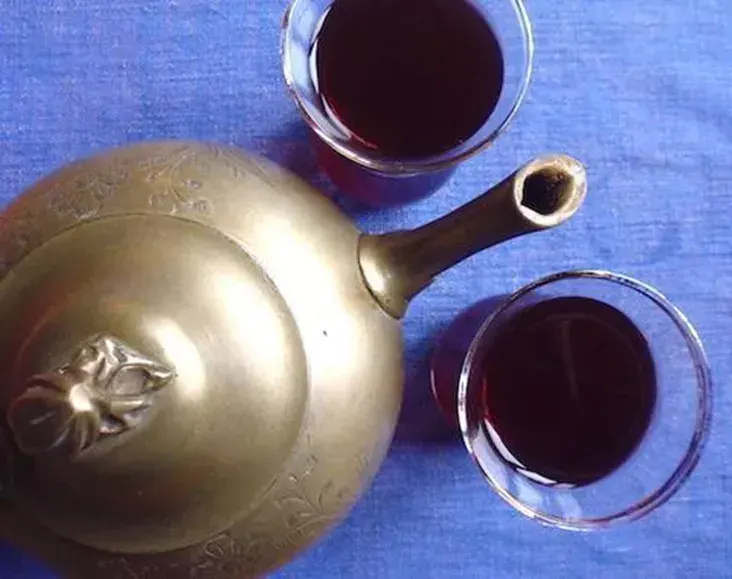
Kofta Bel Sayniyah
Kofta Bel Sayniyah is a dish that features seasoned minced meat (often beef or lamb) formed into elongated shapes and cooked with potatoes and tomatoes.
The meatballs are typically cooked in a tomato based sauce along with the potatoes, creating a flavorful and hearty one pot meal.
The dish is enhanced with a combination of spices and herbs, adding depth and complexity to the flavors.
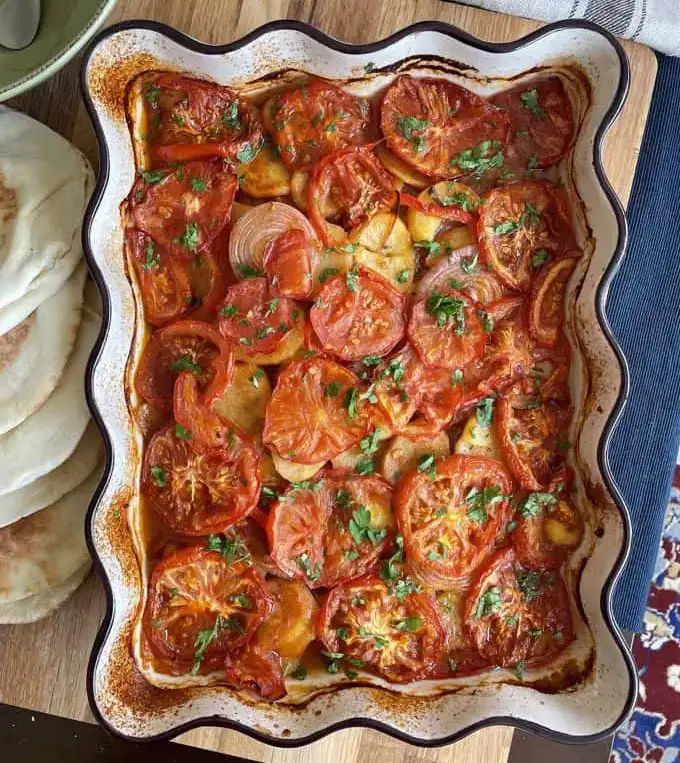
Basa Fillet
Basa Fillet is a seafood dish that highlights Egypt’s coastal cuisine. Basa, a type of catfish, is often used for this dish.
The fillets are typically marinated with a blend of herbs, spices, and sometimes garlic, before being grilled, baked, or pan-fried.
The result is a tender and flavorful fish with a slightly crispy exterior. Basa Fillet is often served with rice or salads.
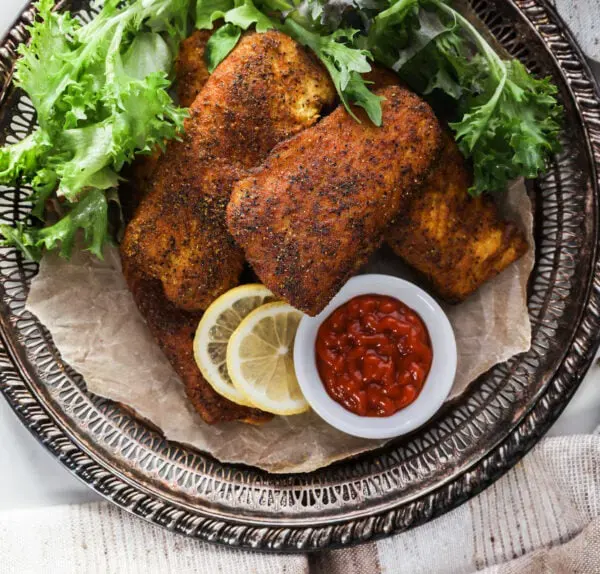
Kabab Halla
Kabab Halla is a dish that showcases the art of grilling in Egyptian cuisine.
It consists of skewered and grilled meat, often lamb or chicken, which is marinated with a mixture of spices and herbs.
The meat is grilled until it’s tender and infused with smoky flavors. Kabab Halla is typically served with Egyptian bread, rice, or a side of salad.

Sayadeya
Sayadeya is a traditional Egyptian dish that features fried or baked fish, usually mullet or sea bream, served over a bed of spiced rice.
The fish is often marinated with a mixture of herbs, spices, and sometimes garlic, before being cooked to perfection.
The dish is then garnished with caramelized onions, nuts, and herbs. Sayadeya is a beloved dish in Egypt, reflecting the influence of the Mediterranean Sea.
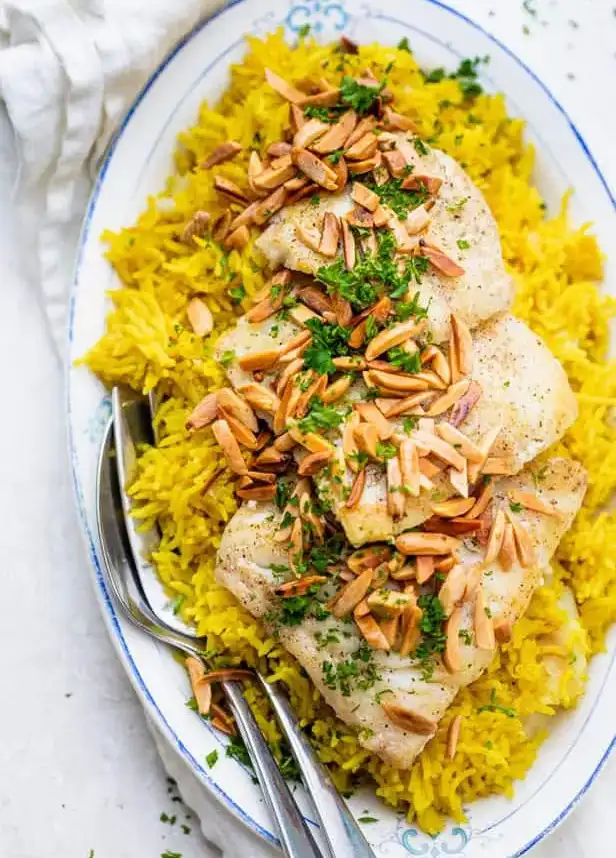
Sambousak
Sambousak is a savory pastry that’s enjoyed in various Middle Eastern as well as North African countries, including Egypt.
It consists of dough filled with a mixture of spiced minced meat (such as beef or lamb) or cheese.
The pastries are often folded into triangular shapes and then baked or deep-fried until golden and crispy.
Sambousak is a popular snack or appetizer, enjoyed for its satisfying combination of textures and flavors.
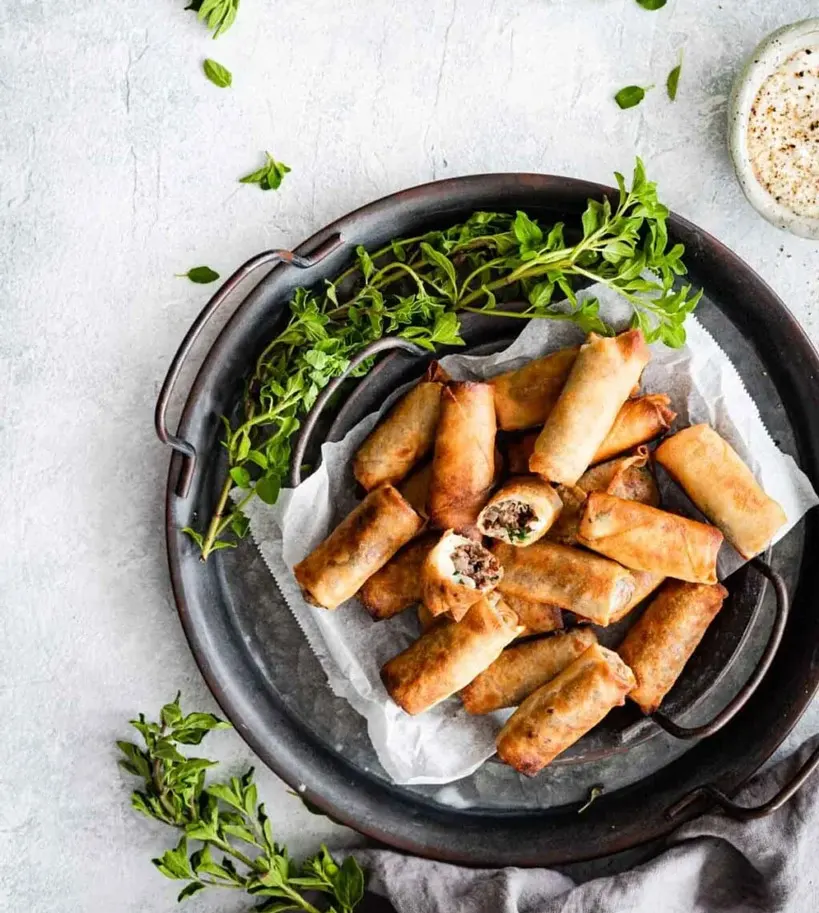
Macarona Bechamel
Macarona Bechamel is an Egyptian take on a pasta casserole dish.
It features layers of cooked macaroni pasta, seasoned minced meat (often beef), and a creamy bechamel sauce.
The layers are baked until the top becomes golden and bubbly.
This dish is a comforting and hearty choice, offering a blend of pasta, meat, and creamy flavors that’s perfect for gatherings and family meals.
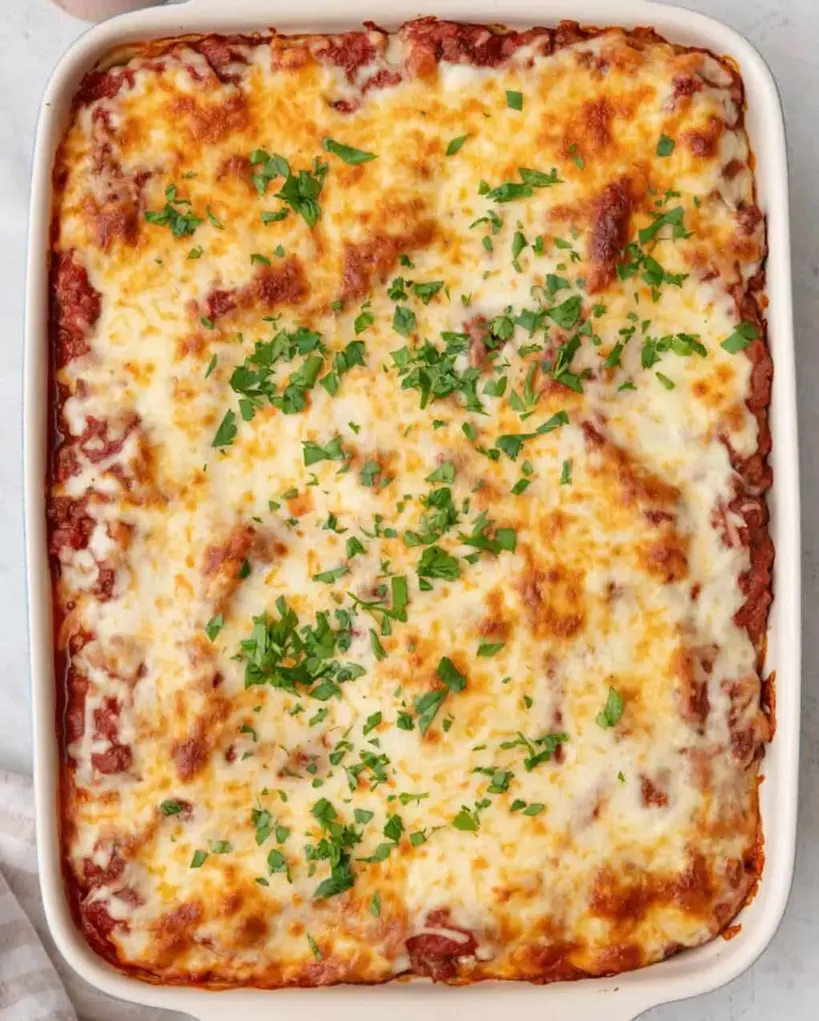
Agwa
Agwa is a unique and traditional Egyptian dessert made from dates.
These dates are stuffed with a mixture of nuts such as almonds, walnuts, or pistachios, and then rolled in powdered sugar.
These stuffed dates are enjoyed during occasions and celebrations, providing a combination of sweetness from the dates and the crunchiness of the nuts.
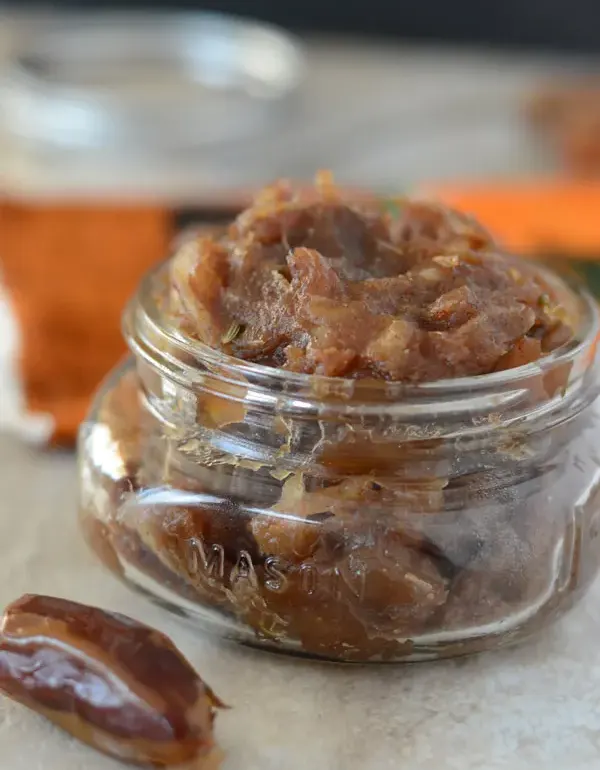
Layali Lubnan
While “Layali Lubnan” translates to “Lebanese Nights,” this dessert has found its place in Egyptian cuisine as well.
It’s a delightful dessert made from layers of semolina pudding, topped with whipped cream, and garnished with crushed pistachios or shredded coconut.
The semolina pudding is often flavored with rose water or orange blossom water, adding a fragrant and indulgent touch to the dessert.
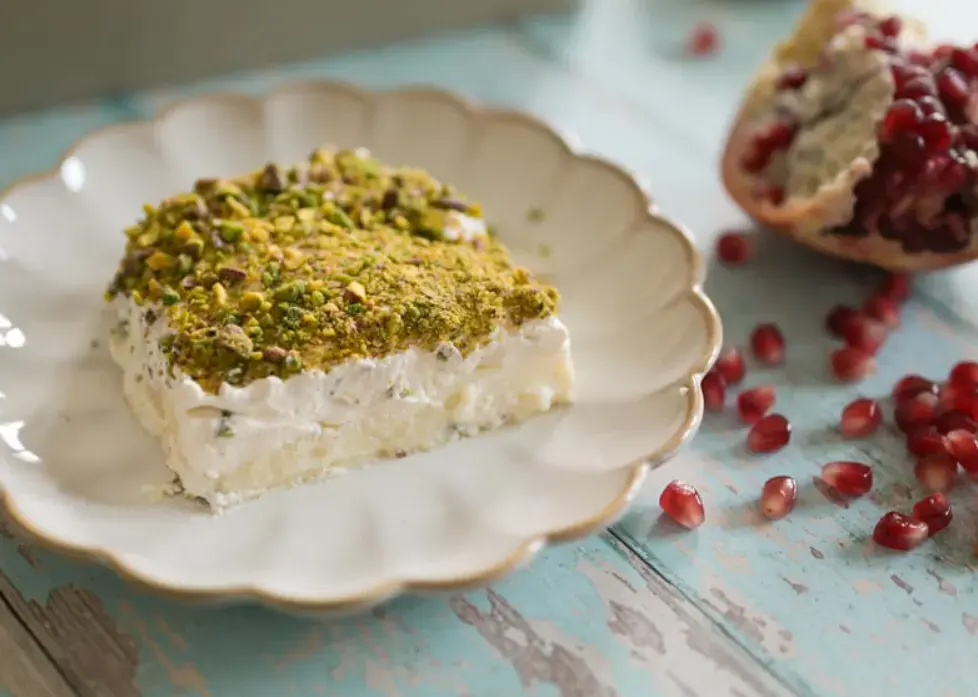
Fesikh
Fesikh is a traditional Egyptian dish made from fermented and salted mullet fish.
It’s typically prepared by salting the fish and allowing it to ferment for a specific period of time.
After the fermentation process, the fish is washed, sometimes soaked to remove excess salt, and then served.
Fesikh is a dish often associated with the spring festival of Sham el-Nessim, which celebrates the arrival of spring.
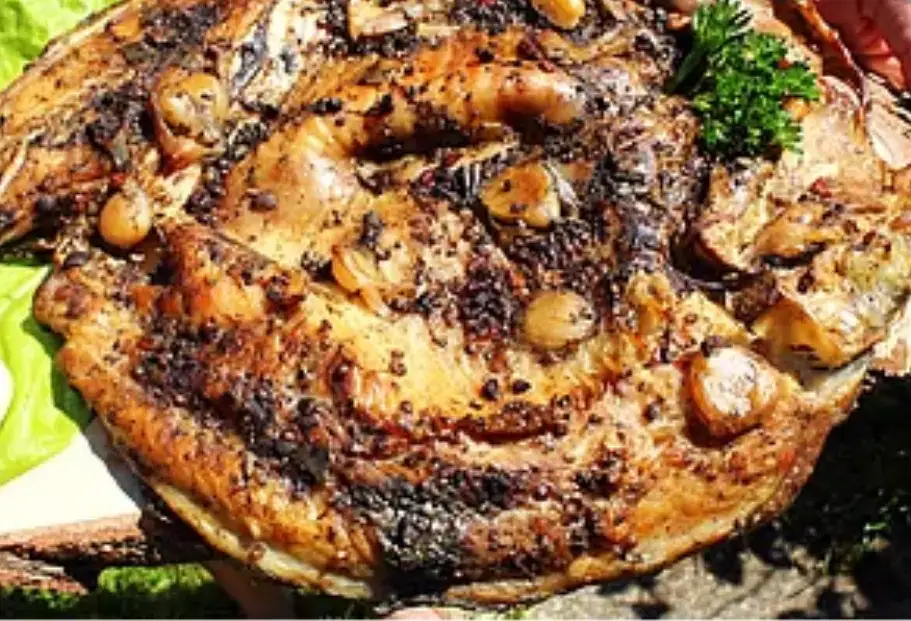
Dukkah
Dukkah is a versatile and flavorful Egyptian spice blend and condiment.
It’s typically made from a mixture of hazelnuts, almonds, or pistachios, sesame seeds, and a blend of spices like cumin, coriander, and sometimes chili flakes.
The ingredients are ground together to create a coarse mixture that’s used as a dip for bread, a seasoning for meats and vegetables, or a topping for salads.
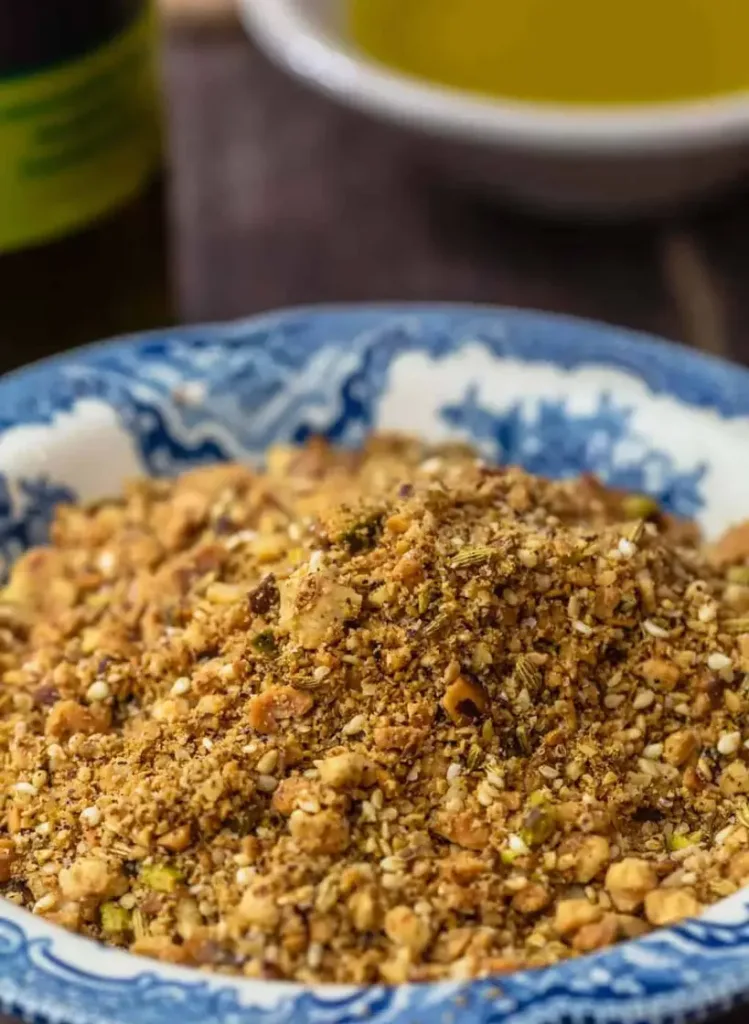
Final Thoughts
Egyptian cuisine is extremely diverse, and every bite offers a burst of flavor that everyone keeps raving about around the world.
Egyptian recipes have dishes with vegetables as well as deliciously marinated and tender meat.
Our Egyptian recipes are a promising choice for people who don’t mind trying out new range of flavors because there is something for everyone likes.
We recommend that you get your hands on Egyptian spices and herbs to make sure whichever dish you try has an authentic flavor.

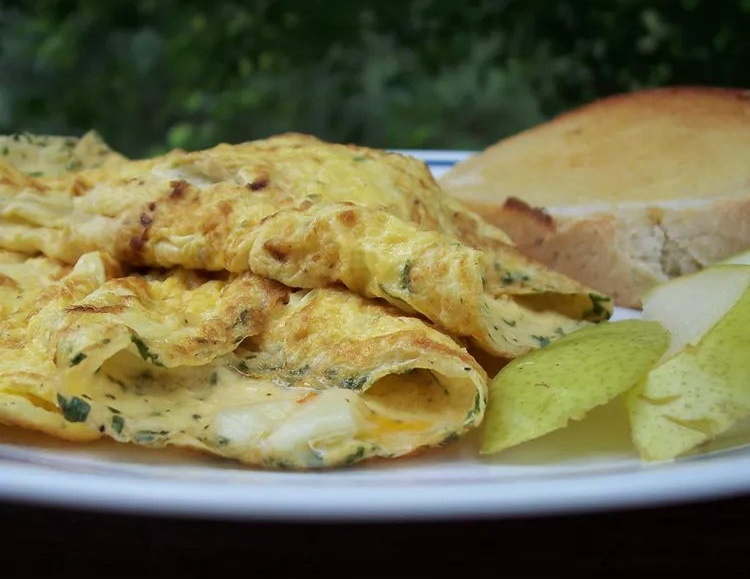
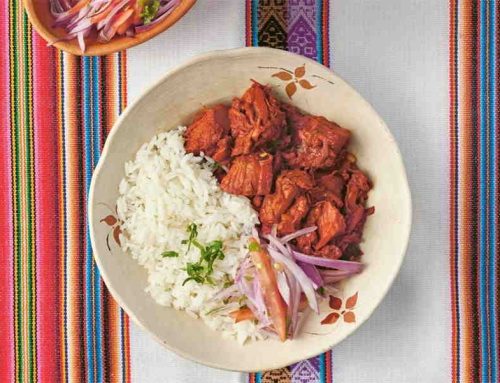

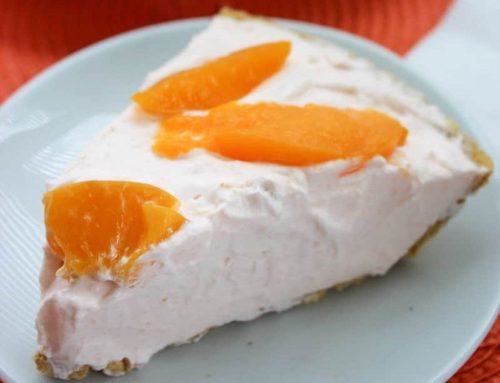

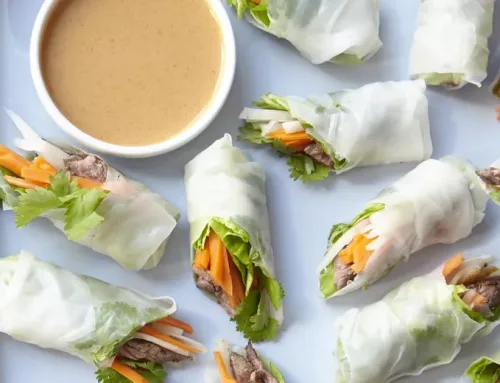
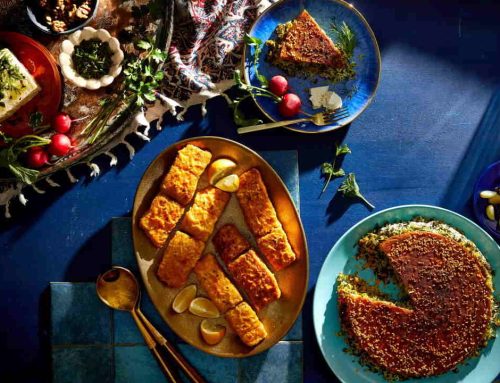

Leave A Comment